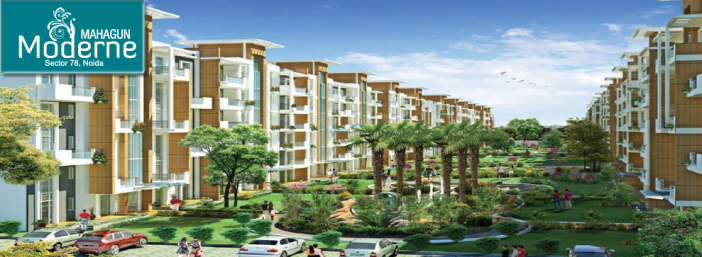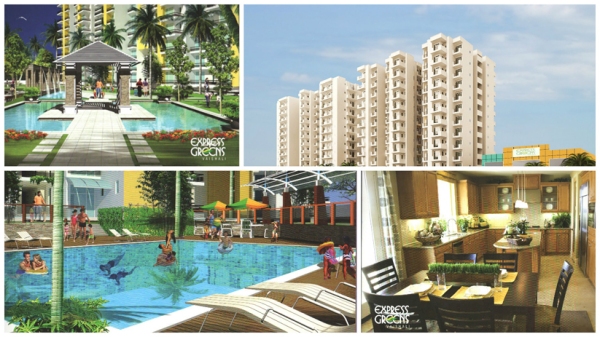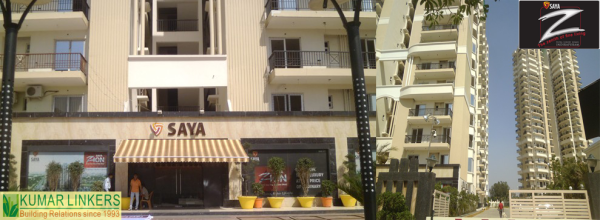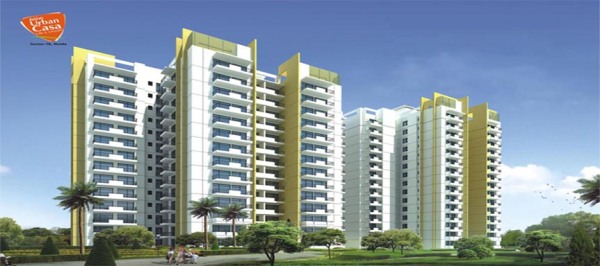Budget 2016: What Modi government should do to make homes affordable for common man
The need for housing units in India has steadily increased over the years. First of all, culturally, everyone who is employed aspires to buy a house for themselves, to get away from clutches of house owners. Since, India is a thickly populated country where the percentage of working class increases day by day. With the support of the government, there are many policies and procedures being designed to make the real estate industry a success in the coming days. The affordable housing scheme of the Modi government, to be fulfilled by 2022 has evoked an overwhelming response from the public. Apart from that, the government has announced India will have 100 smart cities within a particular timeframe. Furthermore, 2500 villages will become smart by the end of 2019. The Union Cabinet has ratified the real estate bill and it is taking some keen positive measures to provide Single Window Clearance for real estate projects. The Ministry of Housing and Urban Poverty Alleviation has clearly stated that there will get introduced new financing options for those developers involved in the government’s Home for All scheme.
Despite the developments in real estate market across the country with the support of the government, there seems to be a lot of laxity in the business. The government should actually look into the options of easing the difficulties of common man by introducing new incentive schemes in future. Such measures will definitely instil a lot of confidence in the minds of people.
There are some wishes of common man, in these lines, discussed in this article underneath:
Higher tax benefit on housing loan:
In cities such as Mumbai or Delhi, a house on an average would cost anywhere between Rs.80lac and 1 crore. Under the income tax act, 1961, the current tax deduction for payment of interest is Rs.2 lakhs. But, this may not connect well to the high interest cost which is 10% to 12% per annum. This limit of Rs.2 lakhs should either be increased or a new higher amount ought to be announced to help salaried individuals across the country.
Increase in timeline for under construction property:
This is one very important aspect that the government has to look into.
Exemption under section 54 of the ITA to an individual, for capital gains earned on sale of house property can only be availed if the new house is invested on in just 1 year before the transfer or purchased 2 years after transfer. For constructed / under construction properties, the timeline for re-investment is 3 years. Very often people come across projects that get delayed a bit, due to some genuine reasons. This has an impact on the interest amount by getting it reduced to Rs.30,000 from Rs.2 lakhs.
Normally, a home buyer starts paying interest soon after taking loan from any bank but, tax deduction had its effect only after the property is constructed. Due to this, buyers get penalized to a great extent. So, the authority should make sure that the buyers are able to claim deductions immediately after the payments are started.
Higher tax deduction for repayment of loan:
As per an amendment in section 80C of the ITA in 2014, the limit for deduction of principal towards a house property loan was increased from Rs. 1 lakh to Rs. 1.5 lakhs.
The government should increase the deduction amount in order for the people to benefit. To provide this benefit separately to the payers is definitely a better option than to have it combined with mutual funds or PPF etc.
Exemption from TDS on purchase of immovable property in case of reinvestment: At the time of purchasing a property, the purchaser has to pay TDS which is Tax Deducted at Source to the government. Due to that, the seller may fall short of cash available to reinvest on a new property.
In case of reinvestment, the government could exercise some support by providing a specific exemption.
Indirect tax cost / Implementation of GST: Currently, the quantum of indirect taxes (VAT and service tax) and stamp duty given by developers to home owners is more than 10% of the value of a property. It is often noticed that there is a mismatch of VAT and service tax on the construction cost of the property. Further, the facility of cross utilization of credit is not available on VAT and service tax payable by Builders when they construct properties and while purchasing raw materials from suppliers. Overlapping of taxes will undoubtedly make a property costlier than before and the same continues to happen.
GST has proposals to combine several taxes including VAT and Service tax into one single structure so that, there will be an uninterrupted flow of credit throughout the supply chain. This will definitely reduce the cost of indirect tax. The government should actually speed up the process the make sure that such measures are taken fast, to develop confidence in the minds of public.
The government should also support those developers that are willing to be a part of the green building construction programs and grant them some special privileges. A hard push from the government is absolutely required to get this done successfully. Such methods will definitely persuade people to develop a lot of confidence in builders.
By taking the above discussed points into consideration, if the government is able to fulfill the requirement of the people to a significant extent then, people’s dream of getting a low-cost house will come true in reality.
Budget 2016: Announcements That Can Drive Growth in the Realty Sector
While home buyers are looking for financial assistance, lower interest rates and protection from delays, developers want a single-window clearance system, easy liquidity and more tax sops.
Though the government made several major announcements in last year’s budget, only a few succeeded in stimulating growth in the realty market. A weak global economic situation has also impacted the Indian realty market. Consequently, the various stakeholders in the realty sector have big hopes from Budget 2016 – they feel that it can make or break the growth of the realty market.
While property buyers are looking for announcements that promise financial assistance, lowering of interest rates on home loans and protection from delays in obtaining possession, developers want an implementation of the single-window clearance system, easy liquidity and increase in tax sops.
Although everybody has some demand from the forthcoming budget, a few measures can actually improve the realty sector and encourage steady growth. Experts believe that Budget 2016 must address the following issues, to live up to the expectations of the realty market:
1. Steps to implement the single-window clearance system
2. Passing and implementing the GST and real estate regulatory bill
3. Infrastructure status to the real estate sector
4. Support for affordable housing
5. Taxation reforms
Affordable Housing for All
To achieve its mission of ‘Housing For All by 2022’, the government should give appropriate income tax rebates and sops, on the purchase of affordable homes, says Dr Anil Kumar Sharma, CMD of the Amrapali Group. “They have to restructure bank loans and provide a single-window approval process for realty projects, to avoid delays. Also, to promote affordable housing, Section 80 IB (10) should be reintroduced in the budget, for the fiscal year 2016-17. Lastly, granting industry status to the housing sector, will help the developers to get bank loans at lower interest rates and pass on the benefits of affordable housing to end-users,” he elaborates.
While the ‘industry status’ continues to elude the sector, analysts and realty experts maintain that it should at least be accorded an ‘infrastructure status’. This will infuse confidence and discipline in the sector and boost the flow of funds as priority sector lending would open up, they point out. It will also help in reducing delivery timelines.
The Land Acquisition Bill
Prajapati also hopes that the land bill will be approved, during the budget session of parliament. “Clarity on the land acquisition policy is the need of the hour, since it forms a key element for the development of the realty and infrastructure sectors. Similarly, we look forward to income tax sops on affordable homes built for the EWS and LIG segments, and tax concessions for construction companies, to encourage them to build low-cost homes,” demands Prajapati.
Stakeholders have also called for a cut on the duties on building materials, such as cement and steel, to help reduce the cost of construction and pass on the benefits of lower cost to homebuyers. The government should remove, or at least reduce the service tax substantially, adds Prajapati, while others are insisting that the government pass and implement the long-pending GST Bill quickly.
Although everybody has expectations from this year’s budget, these few key measures will genuinely benefit the industry and consumers, and encourage growth.
Mahagun Moderne Noida Sector 78

Mahagun Moderne
Mahagun Moderne Presents a new house plan with attractive features in Sector-78 NOIDA, Mahagun Moderne Noida offers 2 bhk, 3 bhk, 4 bhk apartments in Sector 78 Noida at affordable price with all amenities like lush green surroundings, world class infrastructure, parks, shopping centers, secured gated community, multi tier 24*7 securities, power back up, car parking and many more. Mahagun Moderne is designed by internationally renowned architect Hafeez Contractor in association with Gian P. Mathur and Associates.
Location Advantages
- Designed by Internationally renowned architect Hafeez Contractor in association with Gian P. Mathur and Associates
- Land allotted by Noida Authority
- Located in the heart of Noida in Sec-78, with a fully inhabitated locality, near sector -50.
- 7 K.M. from Atta Market.
- Proposed Metro Station and SEZs in immediate neighbourhood.
- Approx. 80% of plot area open to have free flow of light and air to every corner of all apartments.
Supertech Capetown Noida Sector 74, Resale Flats in Sector 74 Noida
Supertech introducing quality into every aspect of the Company ranging from Process, Human Resource, Technology and Services to create an all-encompassing quality culture. With Quality Consciousness and quest for continuous upgradation for ultra modern life-style and luxurious living standard.
Supertech Capetown is a residential project launched by Supertech is at sector 74 Noida. Supertech Cape Town covers about 50 hectares of sprawling and very close to places such as shopping hubs, shopping centres, entertainment and leisure. Supertech Capetown offers 2/3/4 BHK apartment in different sizes between 930 square feet to 2385 square feet, where every house is also for the most demanding standards. In Supertech Capetown all the facilities like 100% power supply, Clubhouse with various games, 24-hour water supply, plenty of space for children and many more to list. 2, 3, 4 bedroom apartments and penthouse towers, luxury villas surrounded by green countryside. Cape Town is one of the best residential projects in the city of Noida.
A world-class leisure and residential community spread out over approx 50 sprawling acres
Capetown has been envisioned as a complete, self-contained campus area built around the best of facilities where every home is designed to the most demanding standards
8 Variants of Well planned (2,3,4 bedroom) apartments and penthouse towers, Luxury Villas spread over a green area, Cape town from Supertech is one of the best housing developments in the city.
Supertech Capetown Noida will comprise of upscale, well appointed apartments with modern conveniences such as a clubhouse, jogging track, swimming pool and more
Supertech Capetown Highlights
- Affordable
- Well connected
- 100 Acre adjoining city greens
- Metro Connectivity
Compare Your Choices In The NCR Areas To Buy House
We have many options to choose from in 2016. There is a huge inventory of value-for-money-units in attractive locations such as New Gurgaon, Ghaziabad, Greater Noida (West), Faridabad and sectors along the Noida-Greater Noida Expressway.
Ghaziabad
Ghaziabad, like the NCT of Delhi, is land locked, which leaves limited scope for expansion. As most of the residential developments are coming up along National Highway(NH)-24, this area is in dire need of good connectivity. That’s why widening of NH-24 assumes such importance. There is not much likelihood of incremental employment or residential demand in Ghaziabad in the next few years. Ready-to-move-in units in Ghaziabad Vaishali, Indirapuram and Kaushambi may continue to see traction this year.
Greater Noida West
Noida Extension (now Greater Noida West) has emerged as an affordable residential destination in NCR. However, factors such as litigations, project delays and lack of connectivity have hampered growth in this area. Today, because of problems like the land acquisition row, project deliveries have been delayed due to intermittent, stalled construction. This, in turn, has also impacted the completion of social and physical infrastructure in that area. Since appreciation due to the initial low base in Greater Noida West has already been taken into account, prices in the corridor are expected to not change much till project deliveries begin and visible infrastructure is in place.
Noida
Real estate projects launched along the Noida-Greater Noida Expressway will only pick up steam once this urban center has developed alternative modes of connectivity with Greater Noida other than the existing Noida-Greater Noida Expressway. The Noida-Greater Noida Metro link is thus likely to attract companies looking to set up base in this belt, since it will provide an alternative commute option for the workforce. However, nothing can be estimated until some groundwork is done.
Prices remain in the range of Rs 3,900 to Rs 5,900 per sq ft across Noida and the Noida-Greater Noida Expressway. However, urban centers in the proximity, such as Greater Noida and Ghaziabad, which have low prices, will keep the pressure on Noida’s price appreciation and could limit the upside potential of prices. Certain pockets in Ghaziabad and Greater Noida are offering discounted options to homebuyers working in Noida within a commutable distance of 20-30 minutes. Incremental office supply in Noida in the coming years has not been seen to benefit any particular residential corridor or area, as it is scattered across various sectors. Thus, appreciation in Noida’s residential market due to the employment pull factor will be distributed unevenly.
Faridabad
Despite good connectivity with Delhi and the Gurgaon residential market, Faridabad is developing slowly because of its industrial tag because of the perception that jobs in the industrial and manufacturing sectors are unable to sustain residential development due to limited affordability. Also, as price appreciation due to infrastructure developments, such as the recently-operational Metro, has already been factored in, price growth in Faridabad is likely to be muted. Till the time the city generates an inherent service base to create and sustain demand, it won’t be a very attractive realty destination.
Gurgaon
The infrastructure push to Gurgaon’s development will be the litigation-free 18-km Dwarka Expressway, which will provide a much-needed alternative connectivity between Delhi and Gurgaon. The under-construction 16-lane, signal-free Gurgaon Expressway and Phase 2 of the Rapid MetroRail Gurgaon on Golf Course Road are other important infrastructure initiatives that will impact the real estate scenario in Gurgaon’s corridors. Certain residential corridors within Gurgaon will benefit from the incremental office supply and infrastructure development. New Gurgaon is positioned to emerge as a relatively affordable residential catchment within Gurgaon.
Link:- http://goo.gl/m0Z0BM
Express Greens Vaishali Sector-1, 3 BHK Ready to Move Flats in Vaishali

Express Greens in Vaishali Sector 1
Kumar Linkers (8010750750) complete Details express greens in vaishali, floor plan, price list, ready to move flats in vaishali, resale flats in vaishali, Ready to Move Flats in Vaishali
Saya Zenith in Indirapuram, Ready to Move Flats in Indirapuram

Saya Zenith Indirapuram
Kumar Linkers (8010750750) find complete details of ready to move saya zenith projects in Indirapuram Ghaziabad, price list, floor plan, resale 2/3/4 BHK flats in Indirapuram, Ready to Move Flats in Indirapuram
Aditya Urban Casa Noida, 3BHK Ready to Move Flats in Noida Sector 78

Aditya Urban Casa
Kumar Linkers (8010750750) aditya urban casa Noida sector 78, price list, layout plan, floor plan, ready to move flats in Noida sector 78, resale flats in Noida sector 78
Kothi for Sale in Noida 9811401750
Kothi Plots Bungalow Villa Available in #Noida Call Now : 9811401750 #KumarLinkers
http://kumarlinkers.in/kothi-in-noida.html

